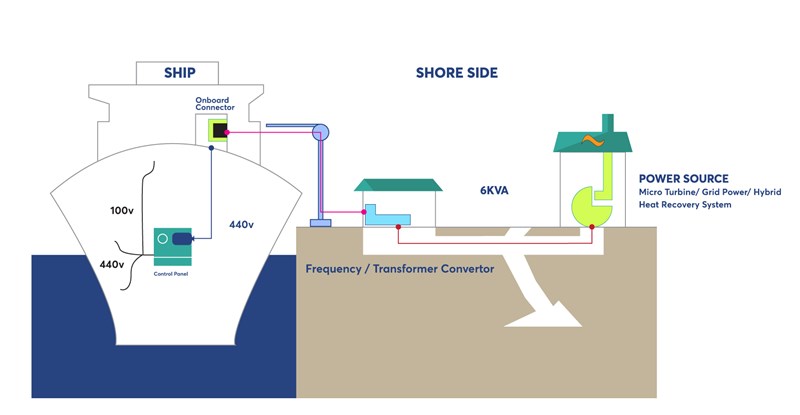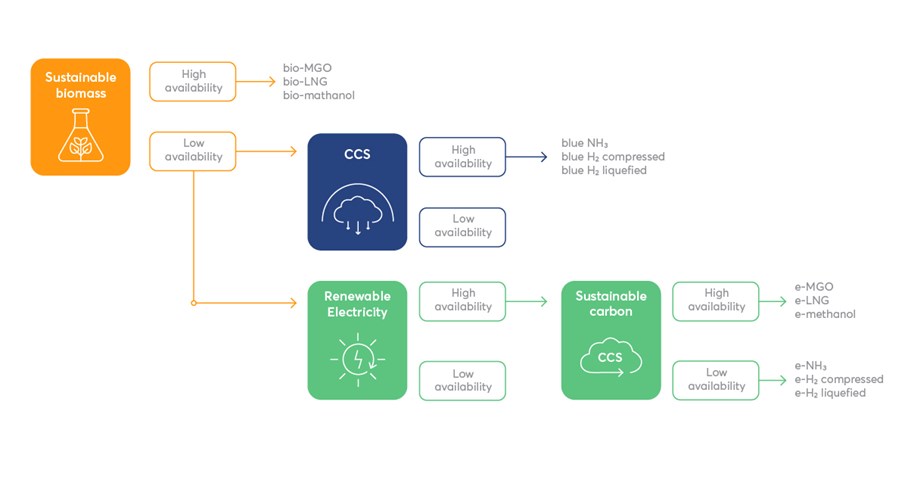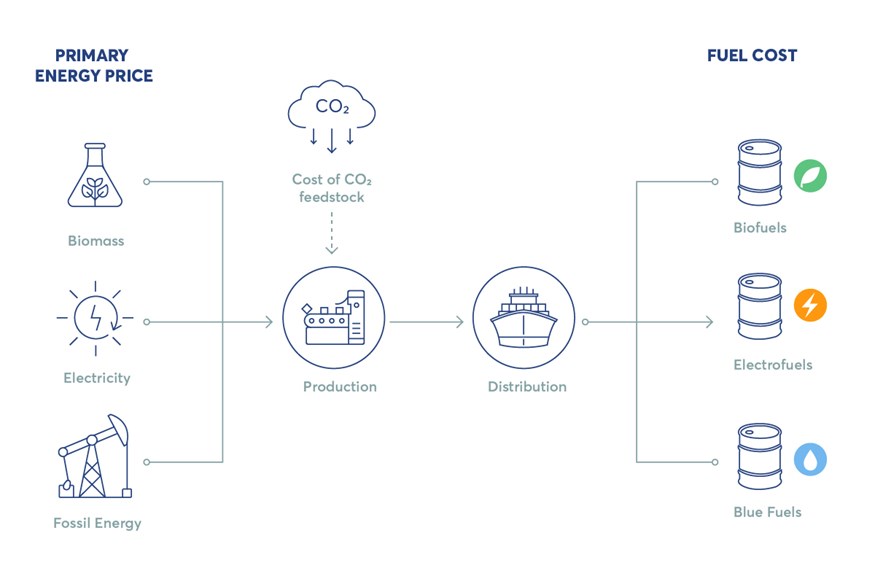Alternative fuels
The shipping sector is crucial to achieving a carbon-free future. In response to the Paris Climate Agreement, the International Maritime Organisation (IMO) has set an ambitious target to halve greenhouse gas emissions by 2050 compared to 2008 levels, while reducing carbon intensity by 40% by 2030 and 70% by 2050.
Future marine fuel markets will be increasingly diverse, dependent on a variety of energy sources and interconnected and linked to different geographical energy markets, production and industries.

The future fuel mix and the uptake of carbon-neutral fuels will be primarily influenced by regulatory policy and primary energy pricing. To fully decarbonise shipping, the use of carbon-neutral fuels will need to increase from the mid-2030s and reach a 40% share of the fuel mix by 2050, according to current IMO targets. By mid-century, the use of fossil fuel oil with very low sulphate content (VLSFO), marine gas oil (LSMGO) and LNG will rapidly decline or be phased out altogether in the most ambitious decarbonisation scenarios. Until then, however, LNG will be widely used and account for 20-30% of the fuel mix, accelerating the shift to zero-carbon fuels.
With sufficient supply of sustainable biomass, bio-LNG, bio-MGO and bio-methanol, which are very energy-rich hydrocarbons, would be the preferred fuels. Compared to bio-MGO and bio-LNG, the acceptance of bio-methanol is particularly high.
Compared to bio-MGO and bio-LNG, the acceptance of bio-methanol is particularly dependent on production costs. Due to the limited supply of sustainable biomass, biofuel prices are expected to be higher than those for e-fuels and blue fuels.
The use of different forms of carbon neutral fuels is constrained by the availability of sustainable energy sources and raw materials for production.
The preferred fuel would be sustainable biomass if it were available in large quantities, as it can be quickly converted into relatively energy-rich hydrocarbon fuels such as bio-MGO, bio-LNG or bio-methanol. When assessing the availability of such biomass, it is also important to consider the demand from other hard-to-degrade industries where energy-rich hydrocarbons are likely to be needed. It is expected that biofuel prices will not be as affordable as those for electric fuels and blue fuels if sustainable biomass is not readily available. The supply of electric fuels depends on the availability of renewable energy to produce hydrogen.

PRICE FACTORS

Sonan Bunkers aims to work with major energy and fuel producers. We will ensure that shore power and infrastructure for storage and refuelling of vessels with future fuels are provided from a single source. We will also help early adopters and support the development of green energy corridors or supply chains and work with the various ports that play an important role in the transition to green shipping.
